Nicaragua: From revolution to crisis
- Published
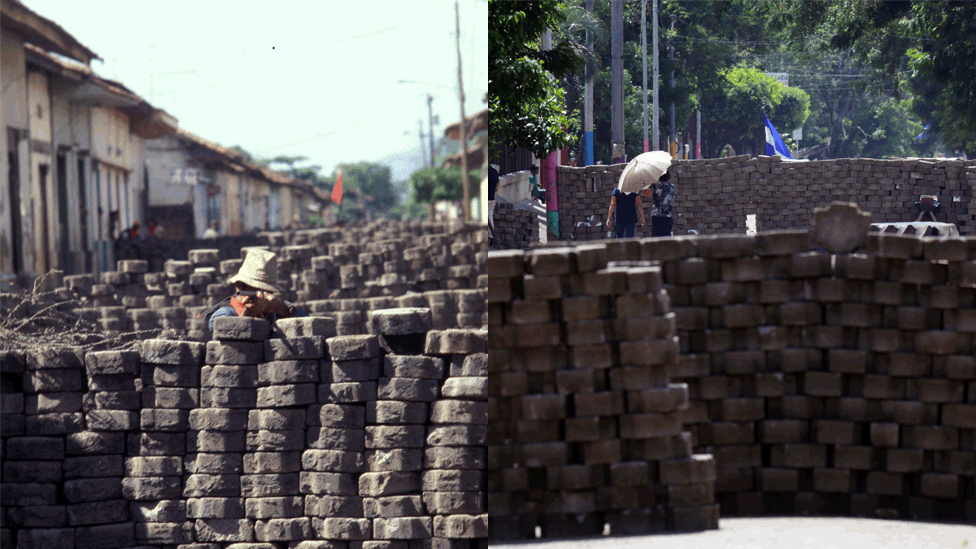
Three months into a wave of protests which has engulfed Nicaragua, some in the Central American country are saying that it is on the brink of a new revolution. They draw comparisons to the Sandinista Revolution which has been marked every year on 19 July since the 1979 overthrow of dictator Anastasio Somoza.
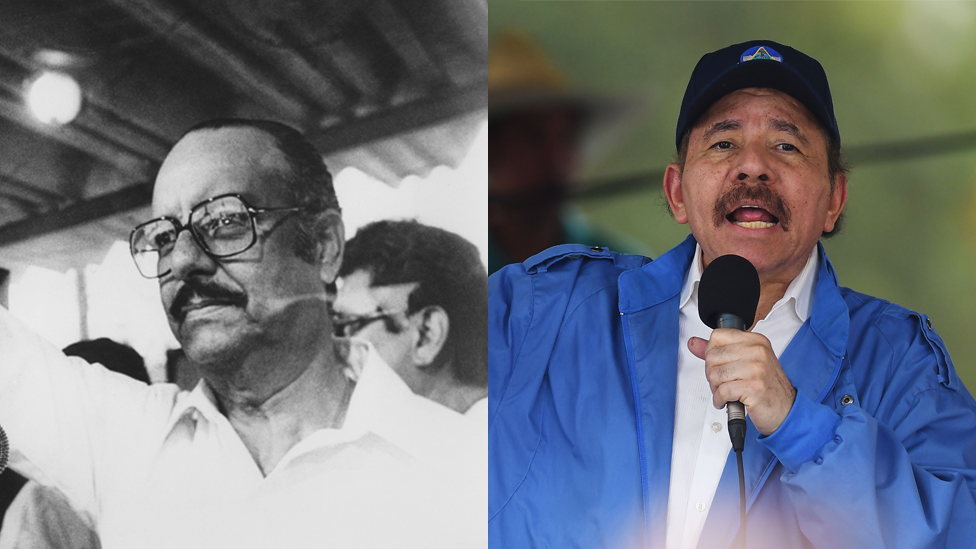
Back then, Daniel Ortega (right) was one of the commanders of the Sandinista guerrilla movement that overthrew Anastasio Somoza (left), whose family had ruled Nicaragua for more than 40 years with an iron fist, killing opposition leaders and violently crushing any dissent.
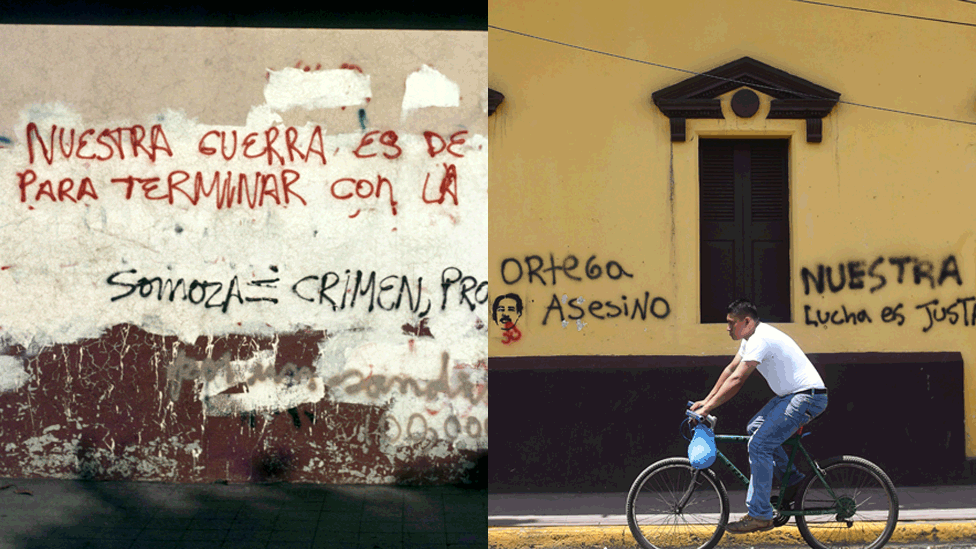
Now it is the former Sandinista commander who is being accused of using lethal force against those who oppose him and what they say are his attempts to establish a dynasty of his own.
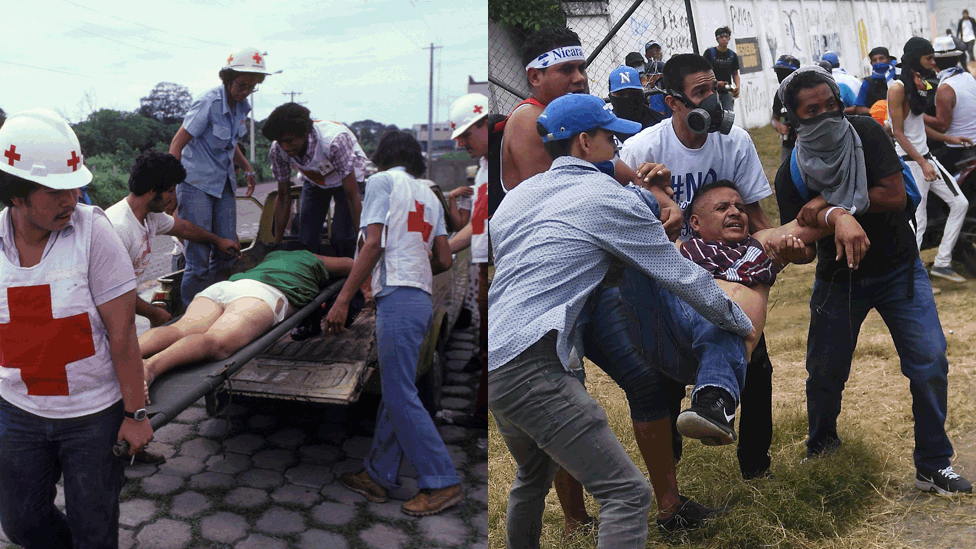
Local NGOs say that more than 350 people have been killed since the start of the anti-government protests on 18 April.
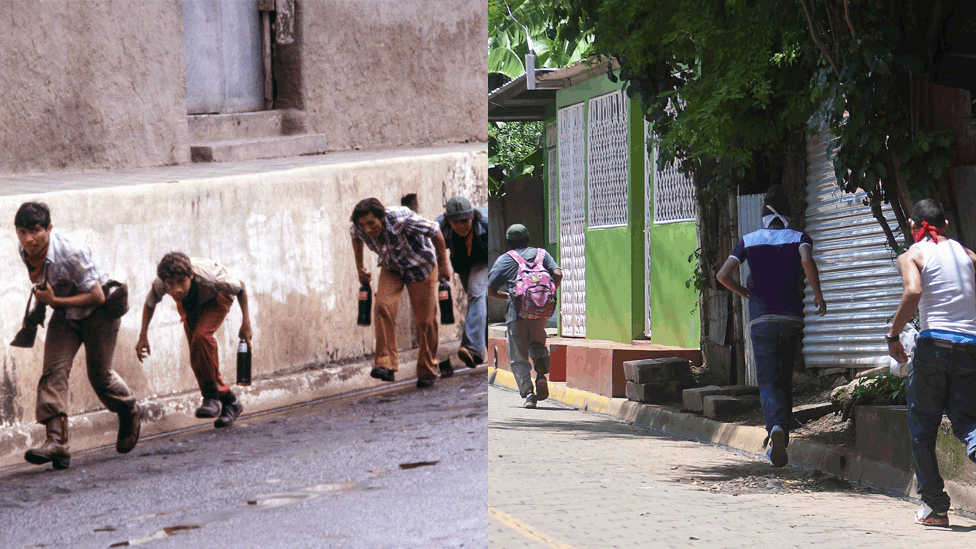
While members of the security forces are among those who have been killed, human rights organisations say that most of the victims have been unarmed civilians shot dead by the security forces and armed supporters of the 72-year-old president.
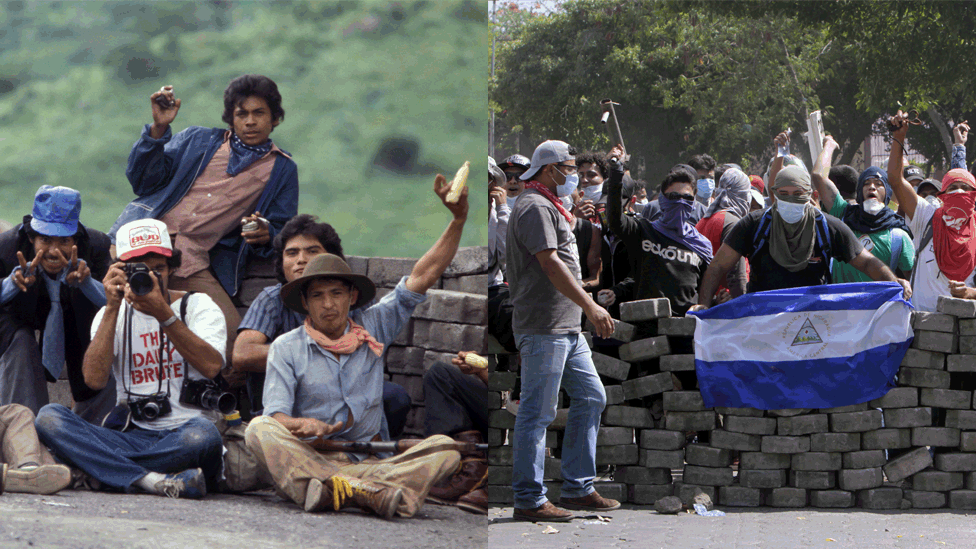
Anti-government protesters have erected barricades which closely resemble those used during the revolution to protect themselves. But the government says the blockades hamper trade and the free circulation of people and have launched "Operation Clean-up" to rid the streets of them.
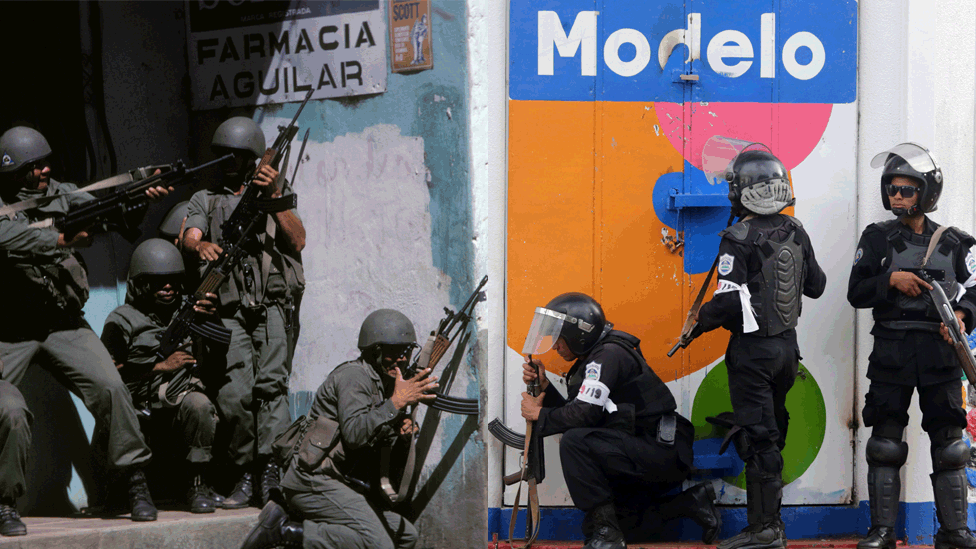
Riot police have moved into opposition strongholds and recaptured some of them.
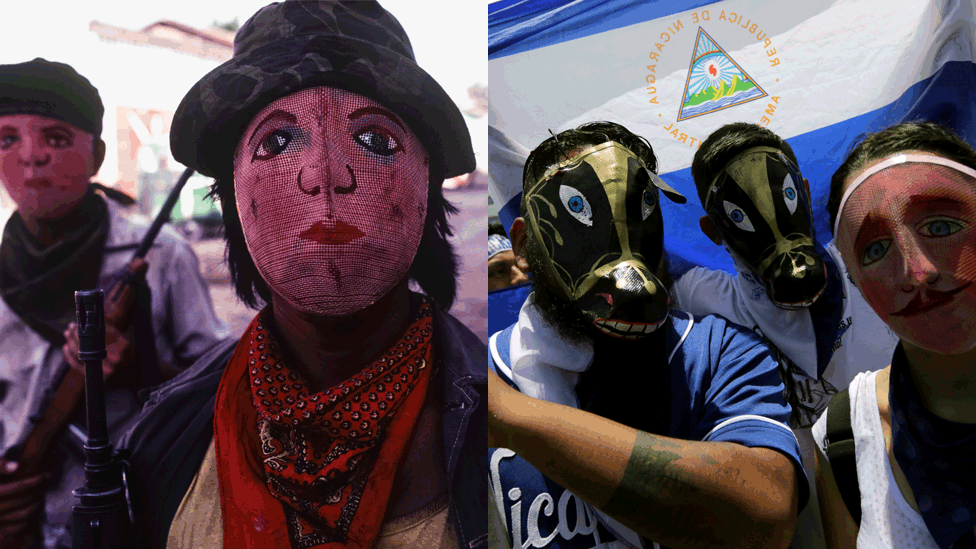
The masks that once were a symbol of the urban guerrilla fighters have also made a return.
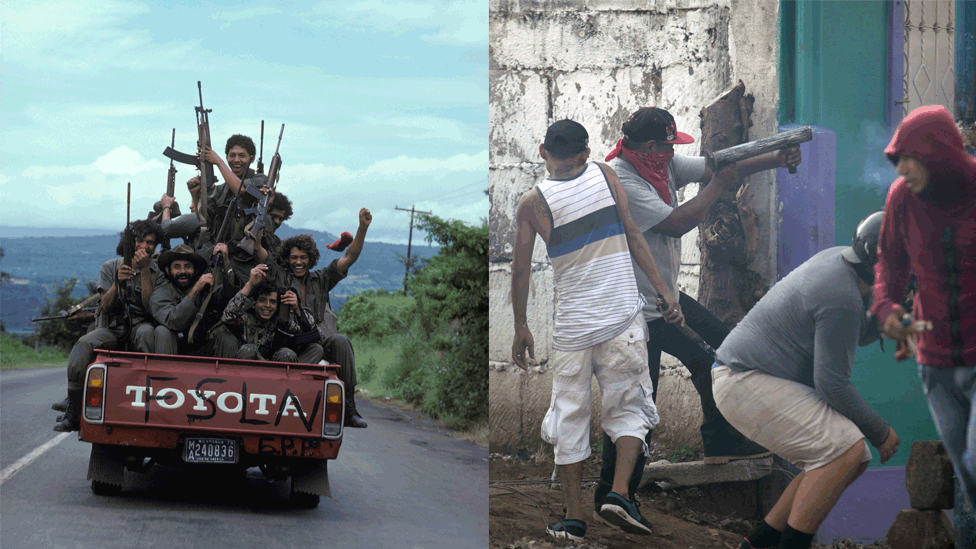
Just as in the Sandinista revolution, students are once again leading the revolt. They have even revived some of the old revolutionary slogans and songs, but this time they are not being sung by Ortega and his comrades, but by those opposing them. President Ortega accuses the protesters of trying to stage a coup d'etat. Unlike the Sandinista rebels, most of today's protesters are armed with home-made weapons.
- Published31 May 2018
- Published16 July 2014
